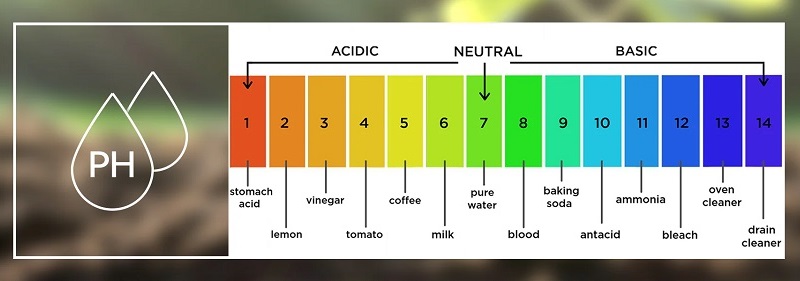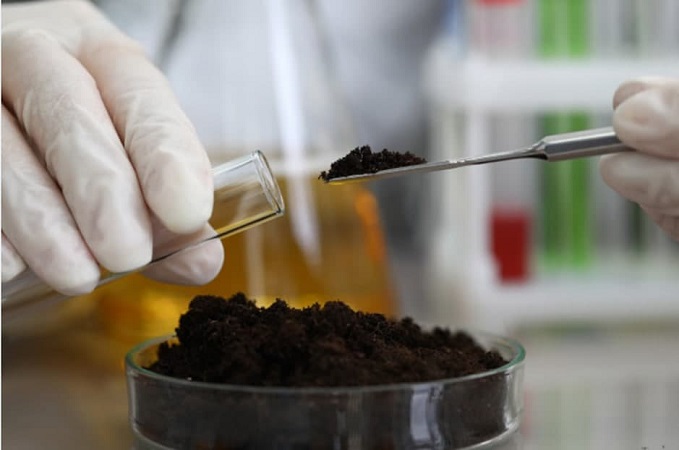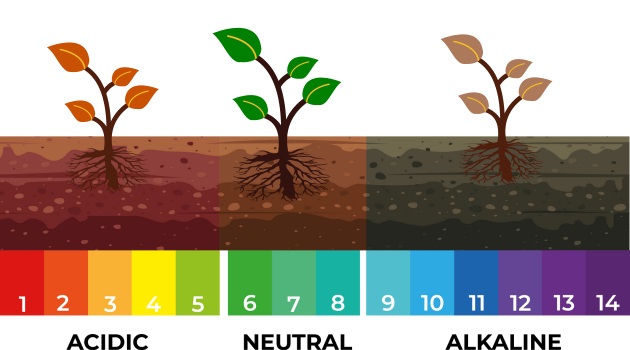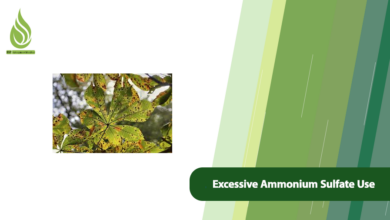
Why Acidic Soil Needs Improvement and How to Fix It?
Acidic soil can create significant challenges for plant growth. When soil pH drops too low, essential nutrients become less available to plants, which in turn weakens growth and reduces yields. Fortunately, with the right methods and fertilizers, improvement can be seen in acidic soil, allowing you to create fertile ground where plants thrive.
In this guide, we’ll explain what acidic soil is, why it needs to be improved, how to test it, and which fertilizers are most effective. You’ll also learn the best practices for using soil amendments so your garden or farmland remains productive in the long term.
What Is Acidic Soil and Why Does It Need Improvement?
Soil pH is measured on a scale from 1 to 14. A neutral pH is 7. If the pH is above 7, the soil is considered alkaline, while soils with a pH below 6 are classified as acidic.
Acidic soils often develop naturally in regions with high rainfall. Frequent precipitation washes away calcium, magnesium, and other minerals that would otherwise neutralize acidity. Over time, this leaching process lowers the soil’s pH. In other cases, heavy use of chemical fertilizers, particularly nitrogen-based ones, can push soil toward acidity.

Maintaining the right pH is vital for crops, lawns, and gardens. The chemical environment of the soil directly determines how available nutrients are to plants. If the pH is too low, roots struggle to absorb nitrogen, phosphorus, potassium, and other macronutrients, even when those nutrients are physically present in the soil.
Key problems acidic soils create
- Nutrient deficiencies – Phosphorus, calcium, and magnesium become much harder for plants to absorb.
- Toxic levels of trace elements – Iron, manganese, and aluminum dissolve in higher concentrations in acidic soils. Although plants need small amounts of these elements, too much can poison roots and inhibit growth.
- Reduced microbial activity – Healthy soil depends on beneficial microbes that break down organic matter into nutrients plants can use. Acidic environments slow or even kill these organisms.
- Weak root systems – Low pH restricts root development, leaving plants less able to resist drought or disease.
Because of these issues, correcting acidic soil is a critical step in successful farming and gardening.
How to Tell If Your Soil Is Acidic
Sometimes you can spot the signs of acidic soil just by observing your plants and soil surface.
Common indicators include:
- Poor plant growth: Crops appear stunted or fail to develop strong stems and leaves.
- Yellowing or wilting leaves: Nutrient deficiencies show up as discolored foliage, often starting with yellow or purple hues.
- Soil color changes: Acidic soil sometimes appears reddish-brown due to the oxidation of iron.
- Growth of acid-loving plants: Moss, ferns, and certain weeds thrive in acidic environments. If these species dominate your land, your soil is likely acidic.
While these clues are useful, the most reliable method is testing the soil pH.
Ways to Test Soil pH
- Home testing kits – Affordable and simple, these kits use chemical solutions and pH strips that change color when mixed with soil and water. By comparing the strip to a color chart, you can estimate soil pH.
- Digital pH meters – These handheld devices use an electrode to provide precise readings. They are more reliable than color strips but require calibration and maintenance.
- Laboratory analysis – The most accurate option is sending soil samples to a professional lab. Labs not only measure pH but also analyze nutrient content, organic matter, and trace elements.

Tip: Because soil conditions can change over time, test your soil at least once a year to monitor pH and nutrient balance.
Fertilizers and Amendments for Acidic Soil Improvement
Improving acidic soil isn’t about adding just one product. The best approach usually combines amendments that raise pH, fertilizers that replace missing nutrients, and organic matter that restores soil health.
1. Agricultural Lime (Calcium Carbonate)
Lime is the most effective material for neutralizing soil acidity. It raises pH, allowing plants to better absorb nutrients. Lime is available in powdered or pelletized (granular) form. Pelletized lime is easier to spread, while powdered lime acts more quickly.
When to apply lime:
- Ideally in the fall or before planting in spring, so the soil has time to adjust before the growing season.
- Always till or mix lime into the topsoil for best results.
2. Phosphate Fertilizers
Phosphorus is one of the most essential nutrients for root development, flowering, and fruiting. Unfortunately, in acidic soils, phosphorus tends to bind with iron and aluminum, making it unavailable to plants. Adding phosphate fertilizers such as triple superphosphate or rock phosphate helps overcome this problem.
3. Potassium Fertilizers
Potassium supports disease resistance, water regulation, and strong stem growth. In acidic soil, potassium leaches away quickly. Applying potassium chloride (muriate of potash) or potassium sulfate restores this vital nutrient. Slow, steady application, often through drip irrigation, improves absorption.
4. Organic Matter and Compost
Organic fertilizers, such as compost or well-rotted manure, provide a wide spectrum of nutrients and improve soil structure. They also feed beneficial microbes that naturally buffer pH levels over time.
- Compost: Made from decomposed leaves, food scraps, and plant residues, it enriches soil and improves water retention.
- Animal manure: Cow, horse, and poultry manure provide nitrogen, phosphorus, and potassium while introducing beneficial microorganisms.

Note: Organic matter doesn’t raise pH as quickly as lime, but over time, it reduces soil acidity while improving fertility.
Best Practices for Using Fertilizers in Acidic Soil
Simply adding amendments is not enough; you need to apply them properly to see long-term improvement in acidic soil.
- Irrigation management – Watering helps nutrients move into the root zone, but overwatering can wash them away. Aim for consistent, moderate irrigation.
- Timing – Apply lime before planting or at the end of the growing season. Fertilizers like nitrogen and potassium should be applied during the crop’s active growth phase.
- Dosage – Always base application rates on soil test results. Overuse of fertilizers can burn roots, harm soil life, and pollute waterways.
- Annual soil testing – Regular tests guide precise fertilizer use and prevent repeated mistakes.
- Choose neutral fertilizers – Avoid products that lower pH further, such as ammonium sulfate. Instead, select fertilizers with balanced or neutral pH effects.
- Combine lime with organic matter – Using both together creates the most sustainable improvement, as lime adjusts pH while organics build long-term acidic soil health.
- Proper drainage – Acidic soils often suffer from poor drainage. Improving drainage prevents waterlogging and nutrient loss.
Crops That Thrive in Acidic Soils
Not all plants suffer in acidic soil. Some crops actually prefer lower pH levels. If correcting soil acidity fully isn’t feasible, consider planting acid-loving crops such as:
- Blueberries
- Potatoes
- Cranberries
- Tea plants
These crops naturally adapt to acidic conditions and can provide good yields without heavy soil modifications.
However, staple crops like wheat, corn, and most vegetables need neutral soil. In such cases, amending the soil remains essential.
Long-Term Strategy: Turning Acidic Soil into Productive Ground

Improving acidic soil isn’t a one-time fix. It’s a process that combines knowledge, observation, and consistent care.
- Short-term fixes: Adding lime raises pH quickly, while fertilizers supply missing nutrients for immediate crop needs.
- Long-term fixes: Building organic matter, encouraging microbial activity, and maintaining good drainage ensure soil health remains stable year after year.
Practical example:
A farmer with acidic soil might spread lime in fall, add compost in early spring, and supplement with phosphate fertilizer at planting time. Over several seasons, not only does the pH improve, but soil fertility, water retention, and microbial life all increase; resulting in stronger, healthier crops.
Conclusion: Transforming Acidic Soil into Fertile Ground
Soil is a living system. Its pH, nutrient balance, and microbial life all work together to determine how well plants can grow. Acidic soil, if left untreated, limits growth by locking away essential nutrients and damaging root systems.
The good news is that with the right combination of lime, phosphate, and potassium fertilizers, organic matter, and proper soil management, you can see a bold Improvement in acidic soil and increase its health. Regular soil testing, mindful fertilizer application, and seasonal care will ensure that your land becomes increasingly fertile over time.
For gardeners and farmers alike, the goal is not only to correct pH but also to create a resilient soil ecosystem that supports abundant harvests for years to come. By applying these strategies, you’ll turn challenging acidic soil into rich, productive ground; and enjoy the satisfaction of strong, healthy plants season after season.
